MARKET OVERVIEW
The global luxury footwear market will be a changing chapter in the history of upscale shoe design, honoring craftsmanship, rarity, and sophisticated taste as it develops. This market will embrace a selection of thoughtfully designed shoes that blend tradition and innovation, where materials of extraordinary quality meet design with emotional depth. We will witness ateliers hand-stitching soles, craft groups exploring leather finishes, and designers who will reinvent shapes yet maintain a feeling of heritage.
In this world, the interaction between creator and wearer will no longer be a mere transaction but a collaborative journey of expression. Some labels will encourage customers to participate in customization sessions selecting hide, stitch color, lining fabrics so every pair will be an individual narrative. Designers will extend beyond traditional trends, drawing from cultural repositories to resuscitate nearly forgotten patterns. A sandal influenced by desert-nomad textiles, a boot recalling alpine folkloric patterns, a stiletto molded from vintage drawings they will promote affection over trend-hunting.
The work of technology will find its way into the world of the artisan, but quietly, near-surreptitiously. 3D-scanning technology will take single-foot contours, ensuring bespoke pairs will fit perfectly without the conventional trial-and-error. Companies will provide unobtrusive digital passports contained within each pair minuscule chips, traceable only by sanctioned apps, guaranteeing authenticity and integrity in a world where fakes cast a long shadow. These chips will retain provenance at hand: when a shoe will have been constructed, by whom, in which tannery, on which last. By doing so, every pair will have an embedded biography.
As sustainability debates will gain momentum, there will be some homes that will give prominence to experimental tanneries that rely on zero-waste vegetable colorants, or soles made from recycled rubber that retain softness and elasticity. Others will test leather substitutes developed through fermentation with the appearance and texture of rare skins but made in laboratories, in sync with shifting consumer morals.
Retailing will change as well. Instead of expansive flagship stores filled to the brim with merchandise, we will see intimate boudoirs where appointments provide seclusion and one-to-one attention. Customers may enter rooms with scented sandalwood, while a craftsman will emerge to present prototype drawings, materials and bottoms. These appointments will be like private conversations.
While this is going on, the online version will be in the same mood. Online salons will enable customers to see designers through livestreams, touch textiles through haptic feedback-enabled swatches sent home, and then order bespoke pairs. A pair that would have been commissioned online will materialize as if out of nowhere, carrying tacit signatures of the journey: the mason-stitched seam line, the hand-painted border, the liner imprinted with a customized motif or owner's initials.
Ultimately, global luxury footwear market will come to be less of a product category and more of an experience a blend of craftsmanship, personal story, subtle innovation, and emotional resonance. It will be tactilely human, mnemonic in memory, with each pair imbued with a story that will last longer than seasons and fads.
Global luxury footwear market is estimated to reach $65,841.39 Million by 2032; growing at a CAGR of 7.1% from 2025 to 2032.
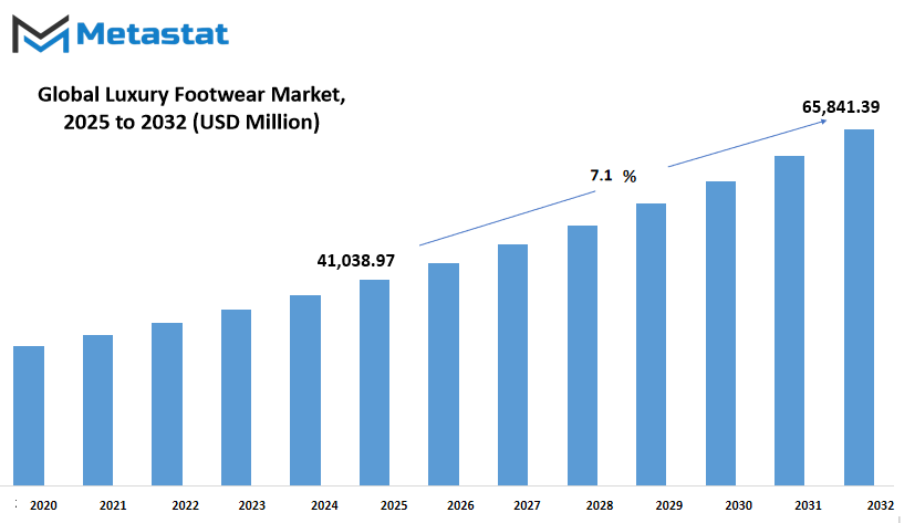
GROWTH FACTORS
The global luxury footwear market is gaining significant attention as changing lifestyles and higher spending power reshape consumer preferences. Increasing disposable income among affluent consumers is a major factor pushing the market forward. As wealth levels continue to rise in many regions, the willingness to invest in premium footwear brands is expected to grow. Luxury footwear is no longer viewed as a simple necessity but as a representation of social standing, personal taste, and exclusivity. This shift in perspective fuels continuous demand and supports steady market growth.
Growing demand for luxury experiences and status symbols will continue to influence the global luxury footwear market. Many buyers now seek products that reflect prestige and offer a sense of uniqueness. Limited editions, custom designs, and collaborations between luxury brands and high-profile designers or celebrities will remain strong drivers of sales. These trends highlight how the market is becoming more experience-driven, where consumers look beyond quality and focus on the story and exclusivity attached to the product.
Despite the positive outlook, certain challenges may slow the pace of growth. Economic downturns often lead to reduced consumer spending on non-essential items, and footwear in the luxury segment falls into this category. During periods of financial uncertainty, demand often softens, affecting overall revenue. Another pressing issue is the competition from counterfeit and imitation products. These low-quality replicas erode brand reputation and create trust issues among potential buyers, forcing authentic brands to invest more in brand protection and consumer education.
Opportunities for expansion remain strong, particularly in emerging markets where interest in luxury goods is rapidly increasing. Rising urbanization, better access to global brands, and a growing middle and upper class in regions like Asia-Pacific, Latin America, and parts of the Middle East will create favorable conditions for market penetration. Brands that strategically invest in these regions by offering localized experiences and exclusive product lines will likely gain a strong competitive edge.
Looking ahead, the global luxury footwear market is set to evolve with innovation and consumer-centric approaches. Technological integration, such as virtual fittings and AI-driven customization, will enhance customer engagement and purchasing experiences. Sustainability will also shape future strategies, as more buyers seek eco-conscious luxury products without compromising on quality or style. By combining innovation with tradition and exclusivity, the market will continue to attract a loyal consumer base, ensuring long-term growth and opportunities for new developments across the industry.
MARKET SEGMENTATION
By Product
The global luxury footwear market will change in exciting ways as technology and style come together. A glance into the future shows that Formal Footwear will still hold a special place, yet casual designs will gain importance among a growing audience seeking comfort with elegance. Formal Footwear will benefit from smart materials that adapt to foot shape and temperature, offering unmatched comfort while keeping that sophisticated look. Think about shoes that adjust fit throughout a long day, remaining comfortable from dawn to dusk.
Casual Footwear will rise with novel features usually seen only in sports or performance shoes. Lightweight cushioning, breathable fabrics, and subtle tech enhancements will lead to casual pairs that feel as good as they look. Those pairs will match sleek outfits as smoothly as they pair with relaxed wear, and that flexibility will make them a favorite in both business neighborhoods and weekend spots. Future consumers will expect that combination and design advances will meet that need.
Visual appeal will matter even more. Elegant metals, fine stitching, and sculpturesque shapes will create footwear that looks like wearable art. Embedded lights or glowing seams will respond to movement or ambient light, adding a new dimension of appeal. Those effects will draw attention in social settings or virtual gatherings when stylized appearance matters.
Sustainability will become essential. Recycled materials, biodegradable components, and low-energy manufacturing will become standard practices. Labels will proudly display a carbon-friendly stamp, showing commitment to planet care. That shift will reinforce the emotional value of a luxury purchase, giving both style and conscience.
Personalization will become near-universal. Buyers will choose colors, textures, sole shapes, even engraved initials. A design preview service will let users see a 3D model of the shoe before ordering. That level of control will make each pair feel custom-made, deepening attachment and driving loyalty.
Data-driven insights will also guide design. Trends tracked from global sources will feed into fast product cycles. Formal Footwear and Casual Footwear lines will both benefit from quick adaptations to emerging tastes.
Future fashion will mirror personality like never before. A bold formal pair might make a statement in a boardroom, while a sleek casual style might signal relaxed confidence online or in real life. That evolution will shape the global luxury footwear market as comfort, sustainability, personalization, and creativity move forward together.
By End-User
The global luxury footwear market will continue to expand as changing lifestyles, rising disposable incomes, and increasing awareness of fashion drive demand. By end-user, the market is divided into men, women, and children, each representing a distinct area with unique growth factors. Luxury footwear for women will remain a major part of the industry as new designs, limited-edition collections, and collaborations with well-known fashion houses attract attention. Men’s luxury footwear will also witness growth, fueled by a growing interest in premium sneakers, formal shoes, and casual footwear designed with style and comfort in mind. Children’s luxury footwear, although smaller in share, will gain popularity as more families choose high-quality products with durability and fashionable appeal for younger age groups.
Looking ahead, the market will be shaped by technological innovations and sustainability trends. Brands will adopt advanced materials that combine comfort with eco-friendly practices, catering to customers who value both luxury and responsibility. Smart manufacturing methods, including 3D printing and customized fitting options, will enhance the consumer experience by offering tailored solutions that meet specific preferences. This shift toward personalization will make luxury footwear more appealing to all age groups, driving consistent demand across the men, women, and children segments.
E-commerce growth will also play a key role in the future of the global luxury footwear market. Digital platforms will allow customers from different regions to access the latest collections instantly, expanding the market reach for brands. Virtual try-on tools and augmented reality features will further improve online shopping experiences, making it easier for customers to choose the right fit and style.
Moreover, collaborations between luxury footwear brands and designers from diverse industries will bring fresh ideas and creative concepts to the market. These partnerships will result in unique collections that attract attention from fashion enthusiasts across the globe. As consumer expectations continue to rise, companies will focus on balancing craftsmanship, innovation, and sustainability to stay competitive.
Overall, the global luxury footwear market will keep evolving as brands respond to changing consumer needs, embrace technology, and explore new opportunities across men, women, and children categories, shaping a future defined by style, comfort, and innovation.
By Distribution Channel
The global luxury footwear market is experiencing robust growth as increasing demand continues to influence purchasing behavior across the globe. Growing spending power, evolving fashion trends, and heightened interest in premium products are spurring sustained growth. With companies continually launching new styles and limited-edition collections, the market will remain in the spotlight with both developed and developing economies. New marketing approaches and social media will also forge tighter brand-buyer relationships, driving future sales.
By distribution channel, the global luxury footwear market is further segmented into offline retail stores and online retail stores. The online channels will take a larger proportion on the back of the convenience of online shopping and availability of global collections that are not necessarily accessible in physical stores. Consumers are attracted to high-quality product images, customer opinions, and easy buy options, which will drive online shopping as the favored option. Moreover, newer technologies like virtual try-on capabilities and AI-based suggestions will further improve online shopping experiences, and digital channels will be even more dominant in the future.
Offline retail outlets will still remain significant in the global luxury footwear market, however. Most customers continue to appreciate the tangible experience of product try-on, face-to-face guidance, and the select environment that boutique stores provide. High-end department stores and flagship stores will continue to be central for premium products and establishing high brand loyalty. Integrating offline experiences with digital capabilities, including appointment shopping and personalized suggestions, will assist physical stores in remaining relevant in a digitally driven market.
The global luxury footwear market future will depend greatly on the equilibrium of both channels. Brands will concentrate on enhancing their online platforms as well as optimizing in-store experiences to cater to changing shopper requirements. Sustainability also will emerge as an increasingly influential variable, with most brands venturing into environmentally friendly materials and ethical manufacturing practices to respond to rising demand for sustainable luxury. This change will not just attract eco-aware consumers but also set brands up for long-term success.
Increased interest from young generations, especially in cities, will further accelerate growth. Social media communities and influencer culture will influence purchasing decisions, with increased engagement with brands that offer style and exclusivity. With technology growing and global reach becoming better, the global luxury footwear market will open up into other markets, and brands will be able to tap into untapped markets. With ongoing innovation and emphasis on digital as well as real-world experiences, the market will stay competitive and dynamic in the future years.
|
Forecast Period |
2025-2032 |
|
Market Size in 2025 |
$41,038.97 million |
|
Market Size by 2032 |
$65,841.39 Million |
|
Growth Rate from 2025 to 2032 |
7.1% |
|
Base Year |
2024 |
|
Regions Covered |
North America, Europe, Asia-Pacific Green, South America, Middle East & Africa |
REGIONAL ANALYSIS
The global luxury footwear market is expected to witness significant growth in the coming years as changing consumer preferences, technological advancements, and expanding retail networks reshape the industry. Increasing demand for high-quality materials, unique designs, and sustainable production is driving steady progress across multiple regions. Rising disposable income and a growing interest in luxury fashion trends are creating new opportunities for established brands as well as emerging players.
Based on geography, the global luxury footwear market is segmented into North America, Europe, Asia-Pacific, South America, and the Middle East & Africa. North America, which includes the U.S., Canada, and Mexico, will continue to maintain a strong presence due to high consumer spending and rapid adoption of online platforms. Europe, led by the UK, Germany, France, Italy, and the Rest of Europe, will remain a key region as a result of its deep-rooted fashion culture and focus on craftsmanship. In Asia-Pacific, including India, China, Japan, South Korea, and the Rest of Asia-Pacific, growth will accelerate as urbanization and digital retail channels increase accessibility and influence purchasing habits. South America, with countries like Brazil and Argentina, along with the Rest of South America, will see steady expansion as global brands strengthen their market entry strategies. Meanwhile, the Middle East & Africa, which includes GCC Countries, Egypt, South Africa, and the Rest of the region, will benefit from a growing demand for premium products driven by younger, style-conscious consumers.
Technology will play a crucial role in shaping the future of the global luxury footwear market. Smart manufacturing, enhanced digital experiences, and virtual fitting tools will improve how consumers interact with brands. Sustainable and ethical practices will also become a major factor, encouraging companies to adopt eco-friendly materials and transparent supply chains to meet the expectations of socially aware buyers.
Looking ahead, partnerships between luxury brands and digital platforms will expand customer reach and personalization. Investment in innovation will lead to designs that blend traditional craftsmanship with modern trends, creating a more dynamic and diverse selection. The shift toward customization will further strengthen brand loyalty, as consumers increasingly seek exclusive and tailor-made options.
Regional dynamics will continue to shape growth patterns, with Asia-Pacific and North America driving the largest share of revenue, while emerging markets in South America and the Middle East & Africa open doors for untapped potential. The global luxury footwear market will not only grow in size but also adapt to evolving trends, reflecting a future where style, sustainability, and technology combine to define the next generation of luxury footwear experiences.

COMPETITIVE PLAYERS
The global luxury footwear market suggests that transformation will take place at a rapid pace. Advances in materials science will introduce new fabrics that remain light, strong, and comfortable. Sustainable practices will reshape production. New methods will reduce waste dramatically. Circular design models will emerge, allowing each pair to return into production cycles, ensuring precious resources will not be lost. Customization through advanced digital tools will redefine experience. Clients will interact with virtual fitting platforms that mirror foot shape accurately and recommend ideal styles before production begins.
As innovation unfolds, key players will continue to steer trends that others will follow. Christian Louboutin will push boundaries with bold new silhouettes that embrace future-style aesthetics. Jimmy Choo will experiment with hybrid textures that merge classic elegance with tech-inspired details. Moncler S.P.A. will incorporate performance elements drawn from outerwear technologies. Chanel, Inc. will maintain timeless design while weaving in minimalist smart features. Prada will combine high fashion with functional enhancements perhaps temperature regulation or adaptive support systems. John Lobb Bootmaker will preserve heritage craftsmanship while integrating subtle sensor-based comfort. Gucci will respond with statement looks that integrate sustainable finishes. Dior will explore modular elements that permit reconfiguration for various settings. Burberry will adapt trench-inspired motifs into innovative footwear accents. Balenciaga will challenge form with avant-garde structures that also maintain wearability. Sacuir will focus on artisanal techniques enhanced by precision engineering. Michael Kors will refine accessible luxury with thoughtful tech touches. Versace will continue to emphasize bold prints, now augmented with interactive detailing. Brioni will uphold bespoke elegance enhanced by discreet electronic features. STUART WEITZMAN will reimagine classic boots with future-ready soles that adapt walking posture. This constellation of brands will ensure that the global luxury footwear market remains a hotbed of new ideas.
The market landscape will feel futuristic but familiar. Clients will expect each pair to offer more than style: intuitive fit, sustainable origin, adaptive comfort, and digital personalization will seem standard. Success will depend on ability to blend tradition with forward-looking innovation, to merge craftsmanship with next-gen technology. The global luxury footwear market will not just sell shoes. It will deliver experiences, shape identity, and anticipate needs before awareness even begins.
Luxury Footwear Market Key Segments:
By Product
- Formal Footwear
- Casual Footwear
By End-User
- Men
- Women
- Children
By Distribution Channel
- Online Retail Stores
- Offline Retail Stores
Key Global Luxury Footwear Industry Players
- Christian Louboutin
- Jimmy Choo
- Moncler S.P.A.
- Chanel, Inc.
- Prada
- John Lobb Bootmaker
- Gucci
- Dior
- Burberry
- Balenciaga
- Sacuir
- Michael Kors
- Versace
- Brioni
- STUART WEITZMAN
WHAT REPORT PROVIDES
- Full in-depth analysis of the parent Industry
- Important changes in market and its dynamics
- Segmentation details of the market
- Former, on-going, and projected market analysis in terms of volume and value
- Assessment of niche industry developments
- Market share analysis
- Key strategies of major players
- Emerging segments and regional growth potential



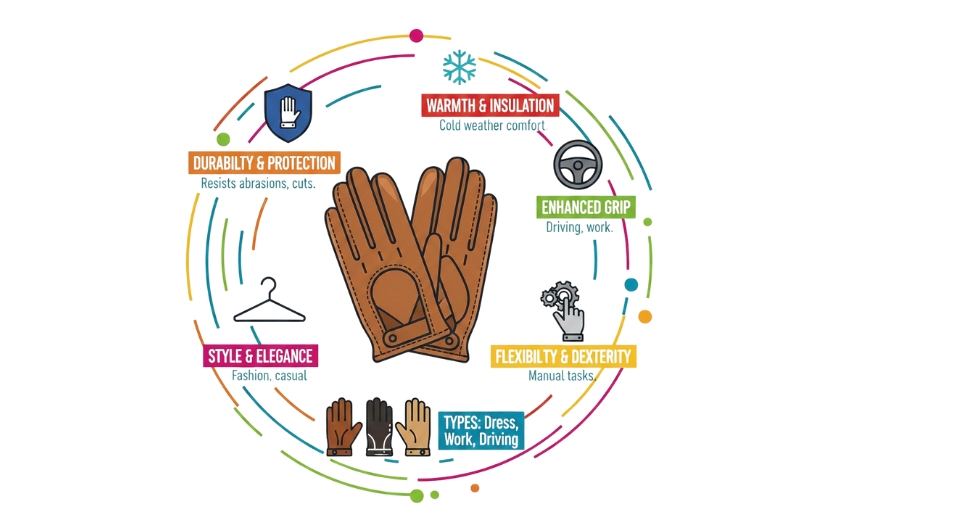
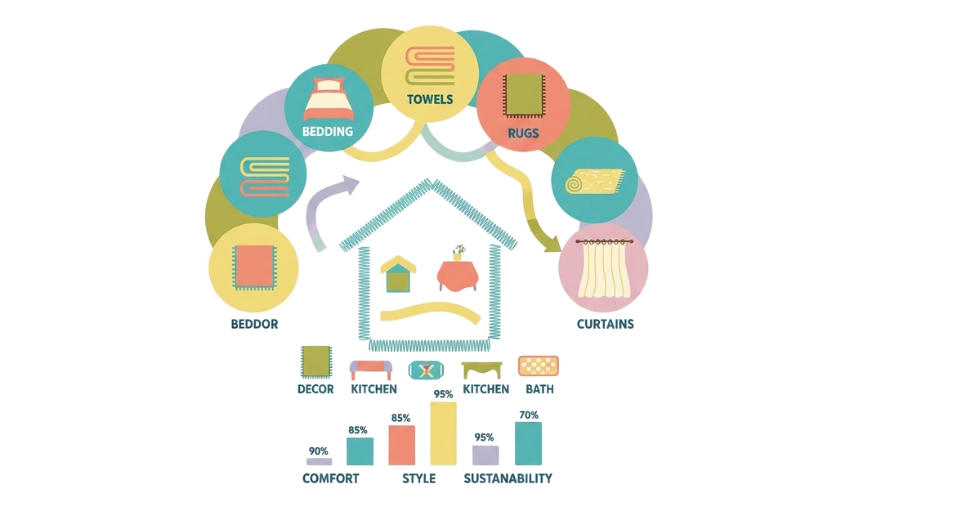
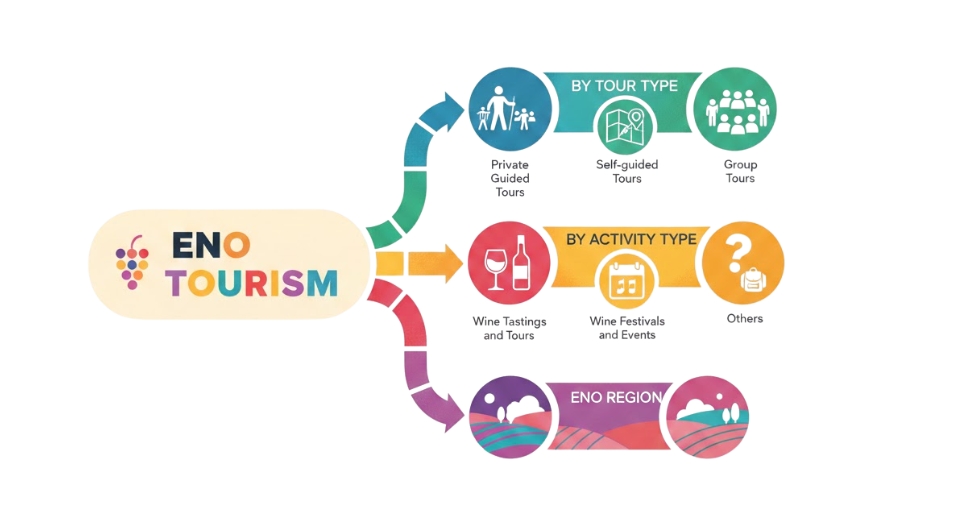
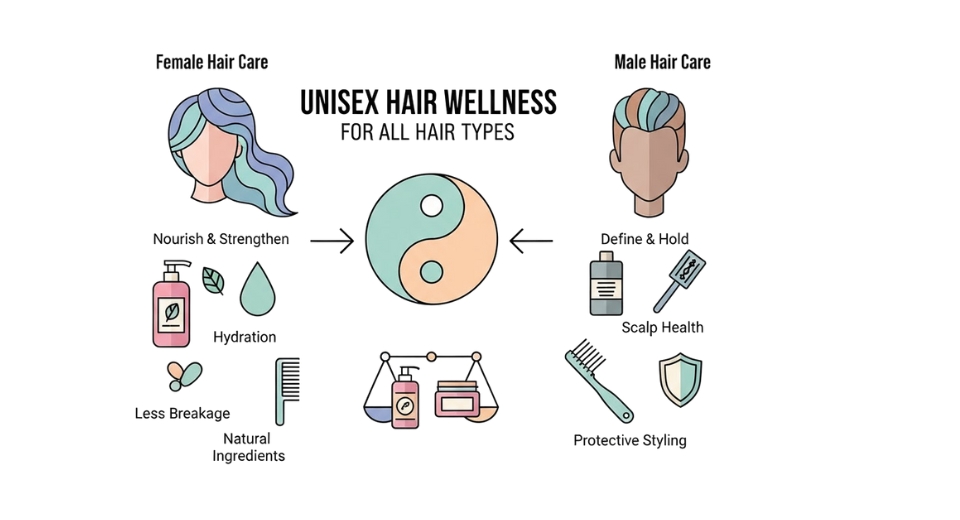

 US: +1 3023308252
US: +1 3023308252






